Welcome to Original Characters, an ongoing series of Industrial Scripts articles examining the most original characters to appear in both TV and film. This article will focus on Cersei Lannister from Game of Thrones.
What is an Original Character?
What is an original character?
It’s a character that sticks with you even when they’re long gone from your screens.
It’s a character that serves as a reference point in casual conversation or a character that sums up a behaviour or generation.
original, adjective
“Not the same as anything or anyone else and therefore special and interesting…”
— The Cambridge English Dictionary
Most importantly, in screenplay terms, an original character is a character that shines through in spite of any other weaknesses within that screenplay.
For a Screenplay Reader or Development Executive an original character is an element of a script that shines through everything else. No matter how busy they are or no matter how much work other elements of the script need, the original characters stand out.
Great characters are at the very heart of great screenwriting and original characters can help elevate great to superlative.
Whether plucked from real life, an amalgamation of real people in real life or just simply a genius stroke of creativity, these are original characters…
The third in our original characters will look at a complex character who has graced our screens in the recent years- Cersei Lannister from Game of Thrones.
We’ll look at aspects including:
- Who is Cersei Lannister?
- What made Cersei Lannister?
- The Writing of Cersei Lannister
- The Tragic Life of Cersei Lannister
- The Ultimate Downfall of Cersei Lannister
- What makes Cersei Lannister Unique?
*The following article contains spoilers for Game of Thrones*
1. Power is Power: Who is Cersei Lannister?
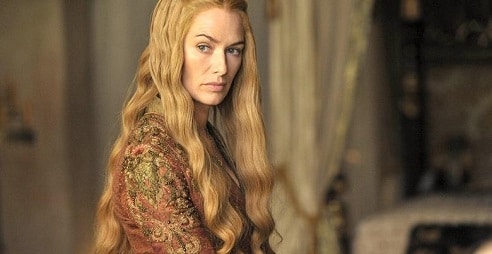
As far as fictional antagonists go, there are perhaps none as complex and concrete as Game of Thrones‘ Cersei Lannister.
Ever since Cersei had Jaime push Bran out of the tower in Season 1, Episode 1: “Winter Is Coming” we’ve loved to hate her. She’s vindictive and malicious, but in spite of these abhorrent attributes, we can’t help but ever so reluctantly root for her.
At the start of Game of Thrones, Cersei is seen solely as the wife and mother to people considered more important than her. But the character of Cersei Lannister is important. So important that she’s the only one who ever gets to title drop…
“When You Play The Game Of Thrones, You Win Or You Die. There Is No Middle Ground.“
Through each season, we’ve watched Cersei shed her skin like a snake, rising to become both Queen and super villain of Westeros. In fact, Cersei Lannister is the only villain that survives until Season 8, besides the Night King.
Whilst the show has seen countless villains come and go, from Joffrey Baratheon to Ramsay Bolton, none have persisted as markedly through resilience and cunning like Cersei of House Lannister.
Cersei is the antithesis of these villains. Joffrey and Ramsay possess neither redeeming qualities nor troubled backstories that might allow for empathy. They are the embodiment’s of evil and they relish their own cruelty.
With Cersei Lannister, it’s a little more complicated than that.
2. Origins: What made Cersei Lannister?
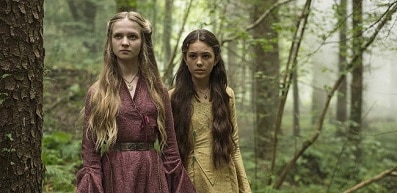
Firstly, the formative component of creating an original, multidimensional character is to construct a rich backstory. Particularly for antagonists, the origin story is pivotal in providing a baseline for their negative actions.
Accordingly, Cersei Lannister’s “badness” can be largely attributed to her character’s backstory.
“Bad people are, from the point of view of art, fascinating studies. They represent colour, variety and strangeness.”
Oscar Wilde
Through exposition and flashbacks, we are offered brief glimpses into Cersei’s past. This straightaway helps to paint a more complex, comprehensive portrait of the character.
“Everywhere in the world, they hurt little girls.”
Besides Maggy the Frog’s prophesy (which we will cover in section 4) these two particularly painful landmarks of Cersei Lannister’s childhood are revealed to us over the course of the series:
- Born a twin to a brother that would be prized and cherished above her for the rest of her life.
- Having her mother pass away birthing another brother she deems inferior due to his dwarfism.
This dichotomy shapes Cersei Lannister’s character tremendously. Her fierce love of Jaime stands in stark contrast to her loathing of Tyrion. And whilst both sentiments couldn’t be farther apart, they are both rooted in perhaps Cersei’s most defining character trait: Jealousy.
During the Battle of Blackwater, Cersei tells Sansa “I should have been born a man“, unveiling her discontent at being a woman in a man’s world. But her jealousy extends beyond her brothers’ status.
Her jealousy of women began when crown prince Rhaegar Targaryen chose Elia Martell and then Lyanna Stark over her. It manifests once she marries Robert Baratheon only to find that he too is hopelessly smitten with Lyanna.
From this point forward, jealousy totally consumes Cersei Lannister; setting the character up as a bitter and resentful Queen just in time for the series to launch.
In short, this provides an intricate framework for the character.
Significantly, it gives Cersei Lannister an uncharted depth for screenwriters to explore.
3. Characterisation: The writing of Cersei Lannister
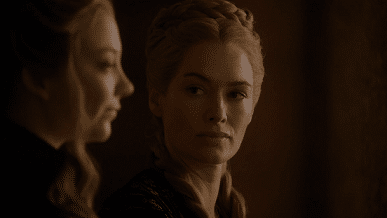
On writing the original character of Cersei Lannister, George R. R. Martin has said:
“Cersei is an interesting case and it’s sort of a commentary on the society that she lives in.”
George R. R. Martin
Game of Thrones showrunner D. B. Weiss has echoed a similar sentiment:
“The character itself is somebody who is driven by motivations that are in some ways so base, so angry and negative. But in other ways, so understandable to anyone who takes the time to imagine what it means to be in her position.”
D. B. Weiss, Deadline
And being in the position of Cersei Lannister means a lot.
As the only daughter to the wealthiest family in Westeros, for a long time her character functioned as a commodity, despite her privilege.
All her life, she’s been a bargaining chip; a tool to unify the noble houses of the Seven Kingdoms. Even after the death of King Robert, her father forces her towards a second political marriage to Loras Tyrell, further stripping Cersei of her autonomy.
Furthermore, Cersei’s originality is characterised by her contrast with the women around her.
Unlike Catelyn Tully, who’s marriage to Ned Stark was both happy and loving, Cersei’s was totally polar. Coupled with Robert’s infidelity and disinterest, Cersei’s love quickly soured to hatred.
“Heaven has no rage like love to hatred turned, Nor hell a fury like a woman scorned”
William Congreve, The Mourning Bride
Cersei Lannister is a woman galvanised by rejection and mistreatment, and jealousy significantly colours everything she does.
“If You Ever Call Me ‘Sister’ Again, I’ll Have You Strangled In Your Sleep.“
For the same reason her jealousy of Catelyn traces back to marriage envy, her jealousy of Margaery and Sansa traces back to their youth and desirability.
Cersei functions as a foil to their characters, as they simultaneously do to her.
Foil (Noun):
Something or someone that makes another’s good or bad qualities more noticeable.
Cambridge Dictionary
For instance, Sansa’s innocence and naivete only accentuates Cersei’s cunning and manipulative streak. Similarly, Margaery’s kindness accentuates Cersei’s coldness.
In truth, Cersei probably recognises in their characters glimpses of her younger self. Whilst she has no control over the more seasoned Margaery, she is quick to destroy Sansa’s initial doe-eyed demeanour.
Of Cersei’s treatment of Sansa Stark, actress Lena Headey has said:
“She can’t help but torture her […] I think that’s driven by her envy.”
Lena Headey
Through her envy and jealousy, Cersei juxtaposes with almost every woman around her. Her dissimilarity is part of what makes her character so original.
By comparison, Ellaria Sand is the only character with which Cersei shares qualities: tenacity, vengefulness, and an unbreakable bond to her lover and children.
But this one parallelism works as a cataclysmic plot device to further deepen the character of Cersei Lannister.
4. Making Meaning: The Tragic Life of Cersei Lannister
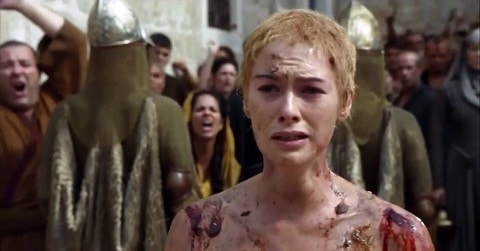
Whilst on the surface Cersei is a callous antagonist, her character comprises of many layers that make this classification more complex.
It is vital to recognise that, like most villains, Cersei Lannister is the protagonist of her own story. To Cersei, her story is that of a woman hell-bent on protecting her family. A story that reads much more like a Shakespearean tragedy than a villain‘s comeuppance.
It has long been said by Game of Thrones characters and writers alike that Cersei Lannister harbours one decent trait:
“You love your children. It’s your one redeeming quality.”
Tyrion Lannister
Owing to this quality, every decision her character makes stems from the desire to keep them safe.
At the same time, Cersei is haunted by the prophesy that she will outlive her children. And ironically, her reckless drive to keep them from harm’s way inadvertently provokes their deaths.
“Everyone Who Isn’t Us Is An Enemy.“
Game of Thrones Showrunner D. B. Weiss has said that the story of Cersei and Joffree is one of:
“…a woman who desperately loves her son and, ironically, makes her son into a terrible person through that love and through over-indulgence.”
D. B. Weiss, Collider
And making Joffrey a terrible person eventually culminates in his assassination. Moreover, this assassination sets off a chain of events that will cause Cersei’s prophesy to be self-fulfilling.
- In having The Mountain kill The Viper to avenge Joffrey’s death, Cersei unwittingly causes his paramour, Ellaria Sand, to poison her only daughter, Myrcella, in revenge.
- Finally, in her desperation to cling on to her last remaining child, Cersei destroys the Great Sept of Baelor with Tommen’s new Queen Margaery inside, not anticipating that this move will prompt his suicide.
At this point, Cersei has nothing left to loose except her crown. Without her children’s welfare at the forefront of her mind, she evolves once more into a truly formidable character whose next move we can no longer forecast.
“What good is power if you cannot protect the ones you love?”
Like many before her, the prophesy that Cersei Lannister attempts so desperately to break eventually comes to fruition as a result of her own faults and behaviours.
But this element of Cersei’s character is original for both its ambivalence and unpredictability.
Some of the more notable literary examples of self-fulfilling prophesy’s include:
- Macbeth in William Shakespeare’s Macbeth
- Oedipus in Sophocles’ Oedipus Rex
- Lord Voldemort in J. K. Rowling’s Harry Potter series
What all of these examples have in common is their fixation on the subject’s own deaths. All three characters are completely driven by their quests for self-preservation. Oedipus even orders his own son’s murder to avoid his fate.
We cannot sympathise with these characters, who are all driven solely by the possibility of their own fatalities. With Cersei, we can recognise that her ruthless, take-no-prisoners approach is fuelled by her love for her children.
Whilst Cersei’s death is the final requisite of the prophesy, it is the looming deaths of her offspring that truly propels her. Most character’s stories end with their self-fulfilling prophesies of death, and arguably, Cersei Lannister died on the day that Tommen jumped from that tower.
But Cersei sticks it out through the final two seasons. We are invited to watch as her character continues to mutate following the loss of the one thing that has motivated her throughout.
5. Ending: The Ultimate Downfall of Cersei Lannister
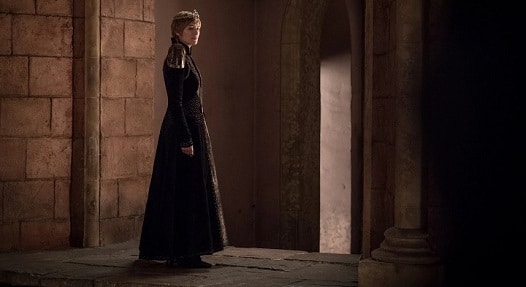
An original character is one that holds up regardless of any weaknesses within the screenplay. And it’s no secret that the final season of Game of Thrones had its shortcomings.
From the rushed pace to the less than stellar dialogue, many were unsatisfied with the show’s denouement. So much so that a petition to remake the season garnered over a million signatures.
Within this sphere of disappointment, an element many felt particularly insulted by was Cersei Lannister’s death. Stamped as anticlimactic and lazy, even actress Lena Headey had her gripes:
“I will say I wanted a better death.”
Lena Headey
But for all its drawbacks, Cersei Lannister’s final onscreen moments add a final layer of originality to her character. Her downfall, if nothing else, subverts our expectations.
The entirety of the show up until Season 8, Episode 5 “The Bells” had been spent painting Daenerys Targaryen as the protagonist and Cersei Lannister as the antagonist. Daenerys as the benevolent leader and Cersei as the malevolent one.
But this binarism is totally flipped on its head. Cersei calls The Dragon Queen’s bluff by inviting her to attack, and Daenerys doubles down, unleashing her wrath on the people of Kings Landing.
From that moment onward, Cersei’s role as the series villain is usurped by Daenerys. As The Dragon Queen transmutes into The Queen of the Ashes, Cersei shrinks from the most powerful woman in Westeros to just a woman, alone in a crumbling castle, waiting for death.
Whilst many fans hated the manner of her downfall – wishing it would have played out a little more savagely – the downfall itself, in many ways, made sense for the character of Cersei Lannister.
“Please don’t let me die. I don’t want to die. Not like this.“
Cersei dies, besides her brother, begging for her death not to play out in the way that it does. She dies exactly how SHE doesn’t want to die, which should be some consolation to her more zealous haters.
Arguably, Cersei receives a kind of poetic justice for her actions, albeit tame. She exits the world as she entered it: crying, childless, vulnerable and holding on to her brother. In the end, her story and character arc was a sort of palindrome; the beginning mirroring the end.
Little by little, Cersei has lost everything. Her children, her parents, her kingdom. The “Power is power” comment she made in Season 2 means nothing now all is lost. As Daenerys looses her grip on sanity, Cersei looses her entire universe.
Her demise was in all actuality, unique. She didn’t die in the stereotypical, climactic way you’d expect a villain of her calibre to. By reversing the roles of Cersei and Daenerys, D&D make us feel for the woman we have loathed for 8 seasons.
Cersei was never due a redemption arc. Just a pitiful end to make us feel, in our final moments with the character, as though we might just empathise with her, if even a little bit.
6. Originality: What makes Cersei Lannister Unique?
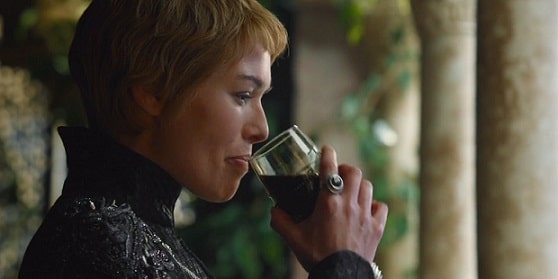
From beginning to end, Cersei Lannister was a character that kept us at the edge of our seats. Her durability in the face of destruction made her Game of Thrones‘ most menacing antagonist.
Cersei Lannister is an amalgamation of tales as old as time: a female underdog who rose to power then fell from it hard.
For a long time, the character of Cersei was playing a role within a role. One she needed to play for the welfare of her family. The mask begins to slip as she gradually looses everything she holds dear.
“When writing a novel a writer should create living people; people not characters. A character is a caricature”
Ernest Hemingway, Death in the Afternoon
“The only way to keep your people loyal is to make certain they fear you more than they do the enemy.“
When we analyse Cersei Lannister, we can draw parallels with other historical Queens:
- Queen Brunhild of Austrasia (c. 543–613) – three children, terrified of being replaced as Queen.
- Margaret of Anjou (c. 1430–1482) – mother to psychotic heirs, controlling, strong-willed.
- Elizabeth Woodville (c. 1437–1492) – beautiful, cunning, fierce loyalty towards family.
- Anne Boleyn (c. 1501–1536) – accused of being in an incestuous relationship with her brother.
But what makes Cersei Lannister an original character is that she extracts from them and then some. She cannot be totally compartmentalised into one person or one story.
Likewise, we can trace aspects of her character back to traditional, literary archetypes like that of the Evil Queen or the Queen of Hearts.
“I am Cersei of House Lannister, a lion of the Rock, the rightful queen of these Seven Kingdoms.”
But Cersei strays from these tropes. Her character reworks them into something totally unique and undefinable. Whilst she embodies much of what we see in evil tyrants and fierce matriarchs, Cersei too embodies something totally unparalleled.
This may in part be due to Lena Headey’s love, understanding and affinity with the character.
“You’re following their (the actors) lead as much as they’re following your lead. They’re creating the psychological nuances of their character as much as you are on the page.”
D. B. Weiss, Austin Film Festival
Cersei’s impact is also evident in those around her. By Season 8, Sansa Stark has developed from a fresh-faced, ingénue into the shrewd Queen in the North, purporting to have learnt a lot from Cersei.
In many ways, Sansa is Cersei’s more altruistic protege. Whilst she doesn’t mirror her, she admires the aspects that made her great.
And what makes Cersei Lannister great is her ambivalence. Her inability to be pigeonholed. Her ability to make us identify with her, in spite of all her wickedness.
Love her or hate her, much like Sansa Stark, we can learn a great deal from the character of Cersei Lannister.
– What did you think of this article? Share It, Like It, give it a rating, and let us know your thoughts in the comments box further down…
– Struggling with a script or book? Story analysis is what we do, all day, every day… check out our range of script coverage services for writers & filmmakers.
This article was written by Sophie Campbell and edited by IS Staff.
Get *ALL* our FREE Resources
Tackle the trickiest areas of screenwriting with our exclusive eBooks. Get all our FREE resources when you join 60,000 filmmakers on our mailing list!

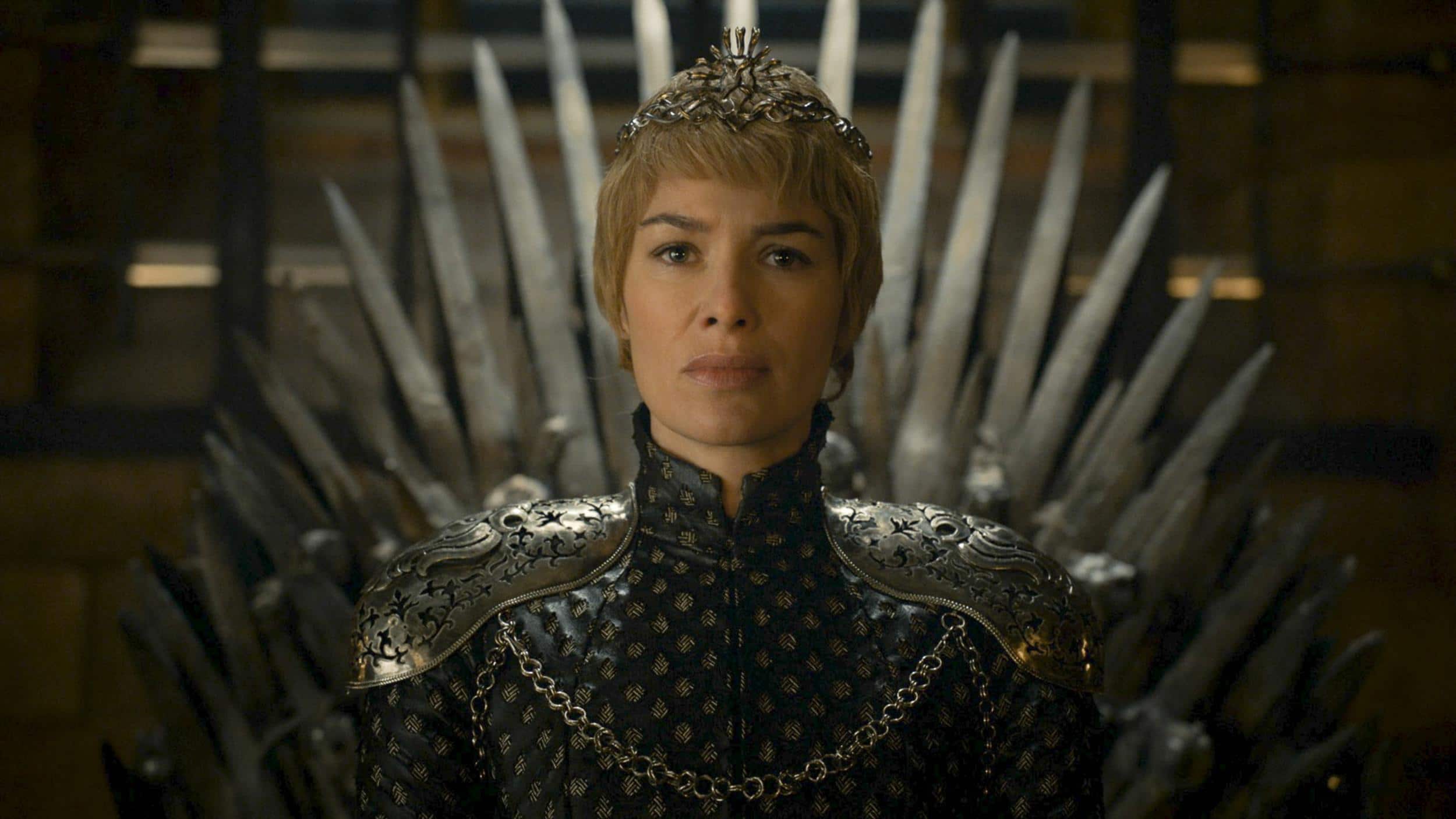
no doubt game of throne is one of the best HBO series that i ever watched